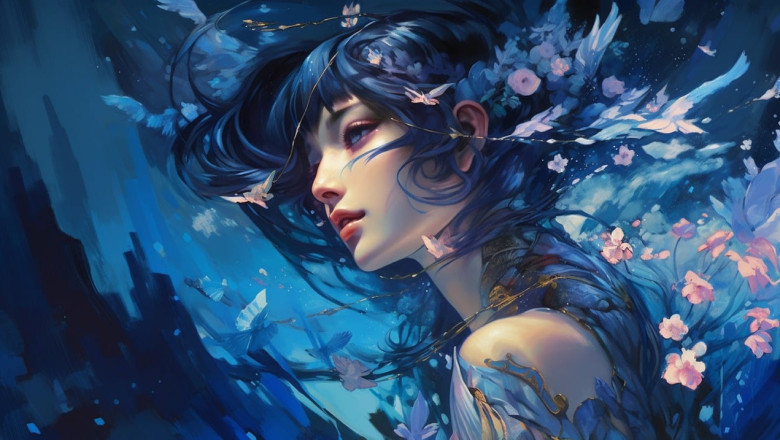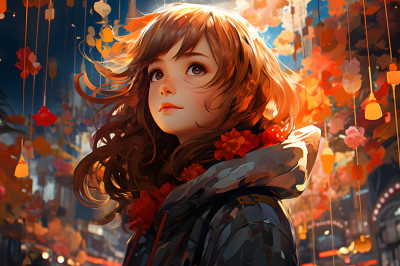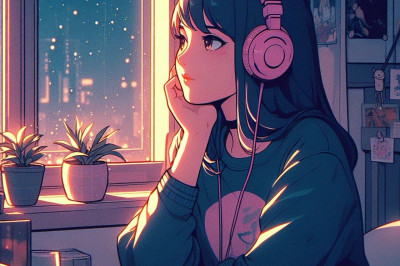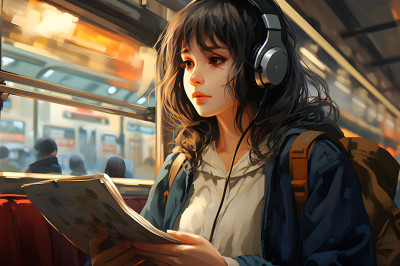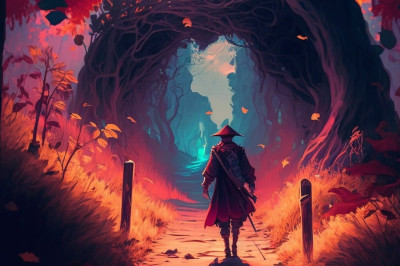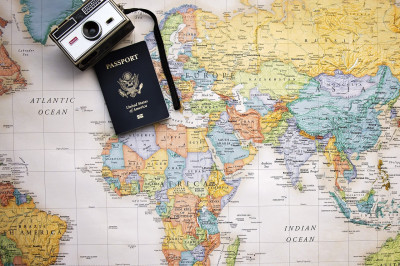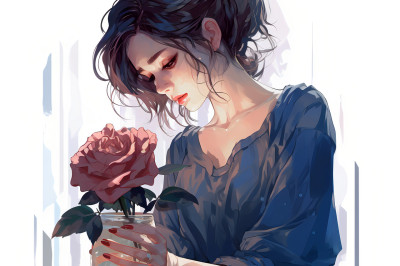The Role of Music in Anime: Composing the Heartbeat of Animated EpicsThe Historical Context of Music in Anime
The integration of music into anime can be traced back to the medium's inception. From the early days of experimental shorts to the lush full-length features of today, music has always played a crucial role in shaping the emotional landscape of anime. In Japan, the marriage between animation and music became prominent with the rise of television in the post-war era, where iconic series like "Astro Boy" set the precedent for synchronized soundtracks.
Understanding the Functions of Music in Anime
Music in anime serves multiple functions, each enhancing the viewer's experience in unique ways. It acts as a narrative tool, providing cues for emotional responses and highlighting the significance of certain scenes. It can also establish the setting, giving audiences an aural sense of place and time that complements the visual elements. Moreover, music is instrumental in character development, with specific themes and motifs representing individual characters or relationships.
Emotional Resonance and Storytelling
The emotional resonance of a scene can be amplified or nuanced through the careful selection of background music. Composers craft scores that underscore the narrative arc, using music to build tension, convey tranquility, or elicit joy. This emotional guidance is key to storytelling, as it helps to immerse the audience in the anime's world.
World-Building and Atmosphere
Music contributes significantly to the world-building in anime. It can transport viewers to different eras, from the historical ambience of samurai epics to the futuristic sounds of sci-fi adventures. The atmosphere of an anime is often established through its soundtrack, with composers using traditional instruments for historical settings or synthetic sounds for modern narratives.
Character Themes and Motifs
Character themes are musical pieces associated with specific characters, recurring throughout the series to signify their presence or evolution. These motifs are crafted to align with the characters' personalities, backgrounds, and journeys, providing an audible cue to the viewer and deepening the connection between the character and the audience.
The Impact of Opening and Ending Themes
Opening and ending themes hold a special place in the structure of an anime. They are not only catchy tunes but also serve as bookends to each episode, setting the tone and leaving a lasting impression. These themes often become hits in their own right, transcending the shows they represent and contributing to the cultural impact of the anime.
Setting the Tone with Opening Themes
The opening theme is typically an upbeat, energetic track that prepares the viewer for the episode ahead. It often contains visual and musical elements that reflect the overarching themes of the series, providing a snapshot of the anime's style and substance.
Reflecting on the Narrative with Ending Themes
In contrast, the ending theme tends to be more reflective, allowing the audience to ponder the events of the episode. It can provide closure or hint at future developments, and it often carries a different emotional weight compared to the opening theme.
The Role of Soundtracks in Anime Fandom
Anime soundtracks have become an integral part of fan culture, with enthusiasts collecting CDs, attending concerts, and engaging with the music on a level that extends beyond the shows. The popularity of anime music has led to the rise of dedicated composers and performers who specialize in the genre, further cementing music's role in the anime experience.
Music as a Cultural Export
Anime music often crosses borders, introducing international audiences to Japanese music styles and artists. This cross-cultural exchange has contributed to the global appeal of anime and has allowed its music to influence other mediums and genres.
Live Performances and Concerts
Live performances and concerts featuring anime music have become events that attract thousands of fans, celebrating the artistry behind the compositions and the community that has formed around them. These performances highlight the importance of music in anime and its power to bring fans together.
The Emotional Language of Anime Soundtracks: How Music Shapes NarrativeThe Power of Leitmotifs in Anime Storytelling
Leitmotifs are recurring musical themes associated with particular characters, locations, or ideas within an anime. These motifs are carefully crafted to evoke specific emotions and to enhance the viewer's connection to the narrative. For instance, a gentle piano melody might be used to signify a character's innocence, while a rapid, discordant string section could indicate impending danger or chaos. As these motifs recur throughout the series, they become inextricably linked with the narrative elements they represent, allowing the music to communicate complex emotional and story cues without the need for words.
Character Development Through Sound
Music in anime doesn't just set the scene; it often plays a crucial role in illustrating character development. A character's theme may evolve over the course of a series, reflecting their growth or changes in their relationships. For example, a character may start with a fragmented, uncertain theme that becomes more harmonious and confident as they overcome challenges and grow. This musical evolution allows the audience to experience the character's journey on a deeper, more instinctive level.
World-Building with Musical Styles
The use of different musical styles and instruments can transport viewers to unique worlds and cultures within an anime. Traditional Japanese instruments might be used to ground a story in a historical setting, while electronic sounds could create the atmosphere of a futuristic world. The soundtrack acts as an auditory landscape that complements the visual elements of the anime, making the world more immersive and believable.
Emotional Pacing and Tension
Music is a masterful tool for pacing the emotional flow of an anime's narrative. A slow, somber track might accompany a reflective moment, giving viewers time to ponder the implications of the story, while a fast-paced, rhythmic piece can heighten the excitement of an action sequence. Composers use changes in tempo, volume, and harmony to build tension and release it, guiding the audience's emotional response and keeping them engaged with the story's ebb and flow.
Symbolism and Themes in Music
Anime soundtracks often incorporate musical symbolism to reinforce the themes of the show. A series exploring the theme of love might feature romantic melodies that recur in various forms, while a show dealing with the concept of time might include ticking sounds or cyclical motifs. These musical symbols help to weave the theme into the fabric of the narrative, allowing the audience to experience the theme on a sensory level.
The Impact of Vocal Songs
Vocal songs in anime, such as opening and ending themes, often resonate with the overarching narrative and themes of the series. Lyrics can provide insight into a character's thoughts or foreshadow events in the story. The emotional performance of the singer adds another layer of depth to the narrative, creating a powerful connection between the music and the viewer's experience of the story.
Soundtrack as a Narrative Device
In some cases, the soundtrack itself becomes a narrative device, with specific songs or pieces of music playing integral roles within the story. A character might be a musician, with their performances revealing key plot points or emotional revelations. Alternatively, a particular song might be a plot point, representing a connection between characters or a memory of past events. When music is woven into the storyline in this way, it becomes a character in its own right, with its own arc and development that parallels the narrative.
Emotional Resonance and Memory
The lasting impact of an anime's soundtrack is often measured by its emotional resonance and the memories it evokes. Long after the series has ended, hearing a piece of the soundtrack can instantly transport a viewer back to the emotions and experiences of the story. This enduring connection is a testament to the power of music in shaping the narrative of anime and creating an unforgettable experience for the audience.
Composers Behind the Scenes: Crafting the Sonic Identity of AnimeThe Composer's Role in Anime Production
Composers in anime play a crucial role in setting the tone and enhancing the storytelling of the series or film. They are responsible for creating original scores that evoke emotions and support the narrative. Their work begins with understanding the story, characters, and the overall atmosphere the director aims to achieve. They collaborate closely with the animation team to ensure that the music complements the visual elements seamlessly.
The Process of Composing for Anime
The process typically starts with the composer receiving a brief from the director or producer. This includes the script, character descriptions, and sometimes storyboards or early animation cuts. Composers then create thematic motifs for characters, locations, and significant plot points. These motifs are woven throughout the anime to provide a cohesive auditory experience. The composition process may involve a mix of traditional orchestration, electronic music, and sometimes culturally specific instruments to create a unique sound palette for the anime.
Notable Composers and Their Impact
Several composers have made a significant impact on the anime industry with their distinctive styles. Yoko Kanno, known for her work on "Cowboy Bebop" and "Ghost in the Shell: Stand Alone Complex," is celebrated for her ability to blend genres and create iconic soundtracks. Joe Hisaishi, the long-time collaborator with Hayao Miyazaki, has composed scores for "Spirited Away" and "My Neighbor Totoro," which are integral to the films' enduring charm. Hiroyuki Sawano, with his dramatic and powerful compositions for "Attack on Titan" and "Promare," has brought a cinematic quality to anime music.
The Creation of Iconic Anime Themes
Iconic anime themes often transcend the shows they originate from, becoming cultural touchstones. Composers achieve this by crafting memorable melodies that are both catchy and emotionally resonant. These themes are carefully designed to encapsulate the essence of the anime in a short, repeatable format that can be used in openings, endings, and throughout the episodes.
The Use of Leitmotifs and Recurring Themes
Leitmotifs are musical phrases associated with particular characters or ideas, used to reinforce the viewer's connection to the narrative. Composers use these recurring themes to highlight character development and underscore pivotal moments in the story. The strategic repetition of these motifs helps to build a sonic identity that viewers associate with the anime.
The Integration of Music with Voice Acting and Sound Effects
Composers must also consider the integration of their music with voice acting and sound effects. The score is often composed in a way that leaves space for dialogue and enhances the impact of sound effects without overwhelming them. This balance is crucial in scenes where voice acting carries emotional weight or where sound effects are pivotal to the action.
The Evolution of Anime Music Styles
Over the years, the styles of music in anime have evolved, reflecting changes in popular music and cultural trends. Composers have adapted by incorporating elements of rock, pop, electronic, and other contemporary genres into their scores. This evolution has helped anime music remain fresh and relevant, attracting new audiences and influencing musicians around the world.
The Global Influence of Anime Composers
Anime composers have gained international recognition, with their music often being performed in concerts and festivals worldwide. Their influence extends beyond the anime industry, inspiring artists and composers across various mediums. The global appeal of anime music underscores the universal language of emotion conveyed through these composers' works.
Iconic Anime Themes: The Power of Opening and Ending SongsThe Emotional Anchors of Anime
Opening and ending themes in anime are more than just bookends to each episode; they are the emotional anchors that can define the tone of the series. These songs often capture the essence of the story, creating an immediate emotional connection with the viewer. They can set the mood for adventure, romance, or drama, and often contain lyrical and musical motifs that resonate with the themes of the anime.
Crafting the First Impression
The opening song of an anime is crucial as it is often the first piece of content that a viewer encounters. It has the power to grab attention and set expectations. A well-crafted opening theme can become synonymous with the anime itself, creating a lasting impression that can draw viewers into the show's world. Composers and producers carefully select or create songs that embody the spirit of the anime, ensuring that the opening theme complements the visual style and narrative.
Endings That Resonate
While opening themes are designed to excite and invite, ending songs often serve a different purpose. They can provide closure to an episode, leaving the viewer with a sense of completion or a poignant emotional aftertaste. Ending themes tend to be more reflective and can sometimes offer a contrast to the energy of the opening, allowing viewers to decompress and reflect on the episode they just watched.
Memorable Melodies and Lyrics
The most iconic anime themes are often those with memorable melodies and meaningful lyrics. These songs can become hits in their own right, climbing music charts and being played on various media platforms. The lyrics often reflect the journey of the anime's characters, encapsulating their hopes, dreams, and struggles, which can resonate deeply with the audience.
Cultural Impact and Recognition
Iconic anime themes often transcend the shows they represent, becoming part of popular culture. They are performed at concerts, covered by various artists, and remixed by fans. Some opening and ending themes have achieved legendary status, recognized even by those who may not be fans of the anime itself. This widespread recognition is a testament to the power and influence of well-composed anime themes.
The Role of Visuals
The impact of opening and ending themes is amplified by the accompanying visuals. These sequences are meticulously crafted to visually represent the anime, often featuring key characters, symbolic imagery, and foreshadowing of events to come. The synchronization of music and visuals creates a powerful and immersive experience that can define the anime's identity.
Continuity and Evolution
In long-running anime series, opening and ending themes may change with new seasons or story arcs. This evolution reflects the progression of the story and the development of characters. New themes can signal a shift in tone or the introduction of new characters and challenges. For fans, the anticipation of a new opening or ending theme becomes part of the excitement surrounding the release of new episodes.
Emotional Connection and Nostalgia
For many viewers, the opening and ending themes of an anime can evoke a strong sense of nostalgia. These songs can transport fans back to the time when they first watched the anime, often evoking the emotions and memories associated with that period in their lives. This emotional connection can be so powerful that hearing the opening or ending themes years later can still elicit a strong emotional response.
Conclusion
In conclusion, the opening and ending themes of an anime are integral to its success and cultural impact. They provide the heartbeat of the series, setting the tone, encapsulating its essence, and leaving a lasting impression on the audience. Through memorable melodies, meaningful lyrics, and synchronized visuals, these themes become iconic symbols of the anime they represent, often outliving the shows themselves and securing a place in the hearts of fans around the world.
Music as a Storyteller: Leitmotifs and Character ThemesUnderstanding Leitmotifs
Leitmotifs are musical phrases or melodies associated with a particular character, place, idea, or emotion within a narrative. Originating from opera and classical music, this technique has been adeptly adopted into the realm of anime to enhance storytelling. When a leitmotif plays, it's not just a cue for the audience to recognize a character or concept; it's a tool that adds layers to the narrative, often evolving alongside the plot or the characters it represents.
In anime, leitmotifs are used to immediately signal the presence or the impending arrival of a character without them being on screen. These motifs can also subtly inform the viewer about a character's emotional state or intentions, often before any dialogue or action reveals it. For example, a change in the instrumentation or tempo of a character's theme might indicate their growth or a shift in their moral alignment.
Character Themes and Their Significance
Character themes are specific pieces of music that encapsulate the essence of a character. They are a subset of leitmotifs, often more fully developed and recurring throughout an anime series. These themes are crafted to resonate with the personality, backstory, or journey of a character, creating an audible representation of who they are.
The significance of character themes lies in their ability to convey complex emotions and narratives without words. They can express the nuances of a character's inner thoughts or highlight aspects of their identity that may not be explicitly stated in the show. When a character undergoes significant development, their theme may be altered or reinterpreted to reflect these changes, thus using music to tell the story of their evolution.
The Role of Music in Emotional and Narrative Pacing
Music, especially through the use of leitmotifs and character themes, plays a crucial role in the pacing of both emotional and narrative elements within anime. A slow, somber theme might accompany a tragic backstory, allowing the audience to fully grasp the weight of a character's past. Conversely, a rapid, upbeat theme can enhance the excitement of a battle scene or a moment of triumph.
The strategic placement of these musical cues within the anime's timeline is key to their effectiveness. By aligning a character's theme with pivotal moments in the story, composers can amplify the impact of those moments, making them more memorable and emotionally charged for the audience.
Evolution of Themes and Narrative Progression
As characters grow and the story unfolds, their associated leitmotifs and themes often evolve to reflect these changes. This evolution can be subtle, such as a variation in the arrangement or the introduction of new instruments, or more pronounced, with a complete transformation of the original theme.
This musical progression mirrors the narrative arc, providing an auditory chronicle of the character's journey. It allows the audience to not only see but also hear the development of the story, creating a multi-sensory experience that can deepen the connection between the viewer and the narrative.
Recurring Themes and the Sense of Continuity
In long-running anime series, the recurrence of familiar leitmotifs and character themes can create a sense of continuity and cohesion across episodes and even different seasons. These recurring musical elements serve as anchors, reminding viewers of past events or emotions associated with certain characters or themes.
This continuity through music helps to maintain a consistent tone and atmosphere for the series, even as the story may branch off into various subplots or introduce new characters. It also rewards long-time viewers with a sense of nostalgia and recognition, as they recall the moments associated with those musical cues from earlier in the series.
Music as a Reflection of Character Relationships
Leitmotifs and character themes can also be interwoven to reflect the relationships between characters. When two characters with established themes come together, their music might merge or play in counterpoint to each other, symbolizing their interaction or the nature of their relationship.
This musical interplay can reveal tensions, alliances, or the evolution of relationships without explicit dialogue or action. It's a powerful storytelling device that can add depth to the characters' connections and provide insight into the dynamics of their interactions within the anime's world.
The Cultural Impact of Anime Music: From East to WestThe Rise of J-Pop and J-Rock Through Anime
Anime has been a significant vehicle for popularizing Japanese pop (J-Pop) and rock (J-Rock) music across the globe. Iconic theme songs and soundtracks have introduced international audiences to the works of Japanese artists and bands. The opening and ending sequences of anime often feature catchy J-Pop or J-Rock songs that become hits in their own right, climbing music charts and gaining airplay outside of Japan. This exposure has led to international tours and collaborations between Japanese musicians and Western artists, further blending cultural boundaries.
Anime Music in Western Subcultures
Anime music has found a special place in various Western subcultures, resonating with fans who are drawn to its unique blend of storytelling, emotion, and melody. Conventions, cosplay events, and anime clubs often feature anime music prominently, with attendees singing along to their favorite tunes in Japanese, despite language barriers. This shared love for anime music has fostered a sense of community and belonging among fans, creating a cultural bridge between East and West.
Influence on Western Music and Artists
Western musicians and composers have drawn inspiration from the rich tapestry of anime music. Some have cited anime soundtracks as influences in their own work, while others have covered or sampled anime songs, introducing them to a broader audience. The complex compositions and diverse genres present in anime music have provided a wealth of material for Western artists to explore and incorporate into their own musical styles.
Streaming Services and the Globalization of Anime Music
The advent of streaming services has played a pivotal role in the globalization of anime music. Platforms like Spotify, Apple Music, and YouTube have made it easier than ever for fans around the world to access anime soundtracks and singles. This accessibility has not only increased the popularity of anime music but has also allowed it to chart alongside mainstream Western hits, signaling its growing influence and acceptance in the global music scene.
Anime Music Concerts and Live Performances
Live performances and concerts featuring anime music have become increasingly popular in Western countries. Orchestras and bands perform anime soundtracks in concert halls, often accompanied by visual elements from the anime, creating an immersive experience for fans. These events highlight the emotional power of anime music and its ability to transcend cultural and linguistic barriers, bringing together diverse audiences in appreciation of the art form.
The Role of Covers and Fan-Made Music
The anime community is known for its creativity, and this extends to the realm of music. Fans in the West often create their own covers or remixes of anime songs, sharing them on social media and video platforms. This fan-made content contributes to the cultural impact of anime music, as it allows fans to engage with and reinterpret the music in ways that resonate with their personal experiences and cultural backgrounds.
Educational Influence and Music Studies
Anime music has also made its way into the realm of education, with music students and scholars studying its composition and cultural significance. University courses and academic papers have analyzed the impact of anime music, recognizing it as a legitimate subject of study. This academic interest further legitimizes anime music as an influential cultural product and encourages a deeper understanding and appreciation of its role in global music culture.
The Evolution of Anime Music: Traditional Influences and Modern ExperimentationTraditional Roots in Anime Music
Anime music has its roots deeply embedded in traditional Japanese music, which includes a variety of styles such as gagaku (court music), min'yō (folk music), and shōmyō (Buddhist chanting). Early anime productions often incorporated these traditional elements to create a sense of cultural authenticity and to evoke the historical or geographical settings of the story.
For instance, the use of the shamisen, koto, and shakuhachi in soundtracks provided a distinctly Japanese sound that could transport viewers to the Edo period or to a serene countryside. Composers like Michiaki Watanabe and Isao Tomita were among the pioneers who skillfully blended these traditional sounds with orchestral arrangements in anime of the 1960s and 1970s, such as "Mazinger Z" and "Kimba the White Lion."
The Impact of J-Pop and City Pop
As Japan's music scene evolved, so did anime music. The 1980s and 1990s saw the rise of J-Pop and City Pop, genres that began to heavily influence anime soundtracks. Artists like Mariya Takeuchi and Tatsuro Yamashita, who were not primarily known for anime, nonetheless had a significant impact on the soundtracks of the era.
Anime series like "City Hunter" and "Sailor Moon" featured opening and ending themes that were catchy, upbeat, and reflective of contemporary Japanese pop music. These themes became hit singles and were crucial in popularizing the anime they were associated with. The trend of using J-Pop songs in anime continues to this day, with many artists releasing songs specifically for anime, which often climb the music charts.
Orchestral Scores and the Influence of Western Music
Western music, particularly the orchestral scores reminiscent of Hollywood cinema, began to influence anime music as well. Composers such as Joe Hisaishi and Yoko Kanno drew inspiration from classical and film music traditions, creating epic and emotive scores for films like "Princess Mononoke" and series like "Cowboy Bebop."
These scores often combined traditional orchestral instruments with electronic sounds, creating a unique blend that could underscore the vast array of emotions and themes present in anime. The use of leitmotifs, thematic continuity, and character-specific themes became more prevalent, adding depth and complexity to the storytelling.
Modern Experimentation and Diverse Genres
In recent years, anime music has become a melting pot of genres, reflecting the global influence and accessibility of different music styles. Composers and producers experiment with rock, hip-hop, electronic dance music, and other contemporary genres to create soundtracks that appeal to a wide audience.
Anime like "Samurai Champloo" and "Attack on Titan" showcase this diversity, with "Samurai Champloo" featuring a soundtrack heavily influenced by hip-hop and "Attack on Titan" incorporating powerful, operatic themes mixed with electronic elements. The willingness to experiment has led to collaborations between Japanese composers and international artists, further expanding the reach and influence of anime music.
The Role of Sound Design
Beyond the music, sound design plays a crucial role in anime, with the evolution of sound effects and ambient sounds paralleling the development of music. Sound designers craft intricate audio landscapes that complement the music and enhance the viewing experience. The integration of traditional foley techniques with digital sound processing allows for a more immersive and dynamic audio environment.
The Future of Anime Music
As technology advances and the anime industry continues to grow globally, the future of anime music promises even more innovation. Virtual idols like Hatsune Miku and advancements in AI-generated music hint at new possibilities for anime soundtracks. The continued fusion of traditional and modern elements, along with the incorporation of international music styles, suggests that anime music will remain a dynamic and evolving art form.
The Indelible Mark of Music on the Anime ExperienceEmotional Resonance and Memory
Music in anime serves as a powerful tool for emotional resonance, creating a bond between the viewer and the narrative. The carefully crafted scores and theme songs become inextricably linked with the characters, story arcs, and pivotal moments, often triggering an emotional response that can be as potent upon the hundredth listening as it was on the first. This emotional anchoring not only enhances the immediate viewing experience but also ensures that the memory of the anime is long-lasting, with melodies that evoke vivid recollections of the story long after the final credits have rolled.
Cultural Impact and Fandom
The music of anime often transcends the medium itself, contributing to the cultural zeitgeist and fostering a sense of community among fans. Iconic opening and ending themes become anthems that are instantly recognizable, sometimes even to those who may not be avid anime viewers. Concerts featuring anime music, cover bands, and fan renditions on social media platforms are a testament to the music's impact, as it becomes a shared language that unites enthusiasts across the globe.
Music as a Storytelling Device
Within the narrative structure of anime, music is not merely an accompaniment but a storytelling device in its own right. Composers and directors collaborate to weave the soundtrack into the fabric of the anime, using leitmotifs to represent characters or themes, and varying musical styles to reflect different settings or moods. The strategic use of silence versus sound further underscores the narrative, with the absence of music often amplifying the impact of a scene as much as its presence.
The Legacy of Composers and Iconic Scores
The legacy of anime music is also the legacy of its composers, whose names are sometimes as well-known as the directors of the anime themselves. Composers like Yoko Kanno, Joe Hisaishi, and Hiroyuki Sawano have become legends in their own right, with their scores contributing significantly to the anime's success and enduring popularity. The iconic nature of their compositions means that certain scores are immediately associated with the anime they were written for, becoming a defining feature of the series.
Music as a Marketing Tool
Beyond its artistic value, music in anime serves as a potent marketing tool. Catchy opening themes are often used in promotional material to attract potential viewers, while ending themes can leave a lingering impression that encourages discussion and anticipation for future episodes. Soundtrack releases, character song albums, and music videos are additional revenue streams for the anime industry, demonstrating the commercial importance of music.
The Evolution of Anime Music
As the anime industry evolves, so too does its music. New genres and experimental sounds are constantly being incorporated, reflecting changes in both the industry and audience tastes. The willingness to innovate ensures that anime music remains fresh and relevant, contributing to the medium's dynamism and its ability to continually captivate new generations of viewers.
The Global Influence of Anime Music
Finally, the influence of anime music extends beyond Japan, impacting the global music scene. Collaborations with international artists, the use of anime songs in video games and movies, and the inclusion of anime tracks on streaming platforms all highlight the global reach of anime music. This cross-cultural exchange not only enriches the anime experience but also introduces diverse audiences to Japanese music and culture, further solidifying the international appeal of anime.



